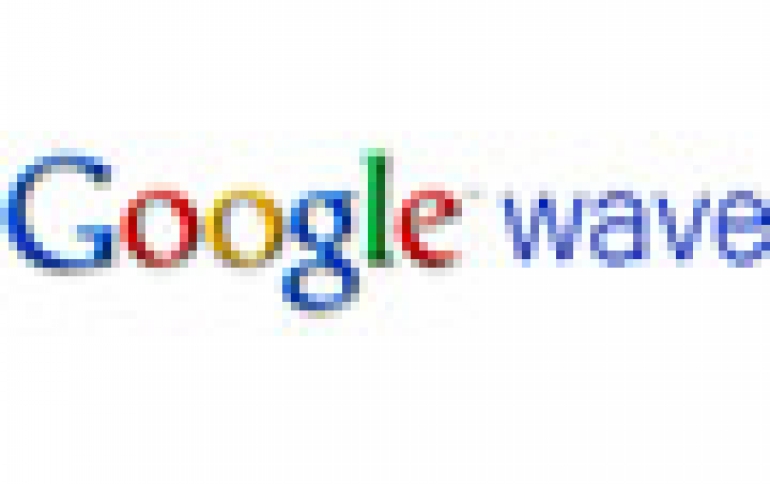
Google Showcases The 'Wave' Communication Platform
Google gave an early preview today of its new 'Wave' online communications service that dynamically combines e-mail, instant messaging, wikis and photo sharing.
The free tool, called "Google Wave," runs in a Web browser and combines elements of e-mail, instant messaging, wikis and photo sharing in an effort to make online communication more dynamic. Google hopes Wave simplifies the way people collaborate on projects or exchange opinions about specific topics.
In Google Wave users create a wave and add people to it. Everyone on their wave can use richly formatted text, photos, gadgets, and even feeds from other sources on the web. They can insert a reply or edit the wave directly. It's concurrent rich-text editing, where users see on their screen nearly instantly what their fellow collaborators are typing in their wave. Users can also use "playback" to rewind the wave and see how it evolved.
Google offered the first glimpse of its latest offering Thursday during the company's annual conference for software developers. Google Wave is expected to be publically available later this year. By the time Wave rolls out for everyone, Google hopes independent programmers will have found new ways to use the service.
As with Android, Google Chrome, and many other Google efforts, Google plan to make the code open source as a way to encourage the developer community to get involved. Google Wave has three layers: the product, the platform, and the protocol.
The Google Wave product (available as a developer preview) is the web application people will use to access and edit waves. It's an HTML 5 app, built on Google Web Toolkit.
Google Wave can also be considered a platform with a rich set of open APIs that allow developers to embed waves in other web services, and to build new extensions that work inside waves.
The Google Wave protocol is the underlying format for storing and the means of sharing waves, and includes the "live" concurrency control, which allows edits to be reflected instantly across users and services. The protocol is designed for open federation, such that anyone's Wave services can interoperate with each other and with the Google Wave service.
Google is counting on outsiders to figure out how to weave Wave into the popular Internet communications service Twitter, social networks like Facebook and existing Web-based e-mail services, said Lars Rasmussen, a Google engineering manager.
In Google Wave users create a wave and add people to it. Everyone on their wave can use richly formatted text, photos, gadgets, and even feeds from other sources on the web. They can insert a reply or edit the wave directly. It's concurrent rich-text editing, where users see on their screen nearly instantly what their fellow collaborators are typing in their wave. Users can also use "playback" to rewind the wave and see how it evolved.
Google offered the first glimpse of its latest offering Thursday during the company's annual conference for software developers. Google Wave is expected to be publically available later this year. By the time Wave rolls out for everyone, Google hopes independent programmers will have found new ways to use the service.
As with Android, Google Chrome, and many other Google efforts, Google plan to make the code open source as a way to encourage the developer community to get involved. Google Wave has three layers: the product, the platform, and the protocol.
The Google Wave product (available as a developer preview) is the web application people will use to access and edit waves. It's an HTML 5 app, built on Google Web Toolkit.
Google Wave can also be considered a platform with a rich set of open APIs that allow developers to embed waves in other web services, and to build new extensions that work inside waves.
The Google Wave protocol is the underlying format for storing and the means of sharing waves, and includes the "live" concurrency control, which allows edits to be reflected instantly across users and services. The protocol is designed for open federation, such that anyone's Wave services can interoperate with each other and with the Google Wave service.
Google is counting on outsiders to figure out how to weave Wave into the popular Internet communications service Twitter, social networks like Facebook and existing Web-based e-mail services, said Lars Rasmussen, a Google engineering manager.





















